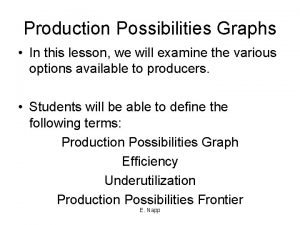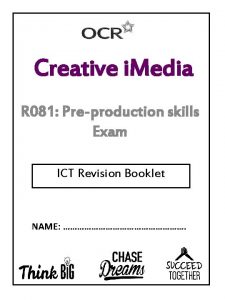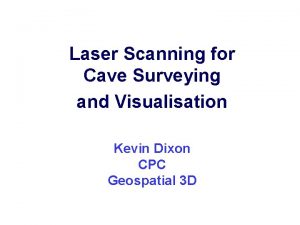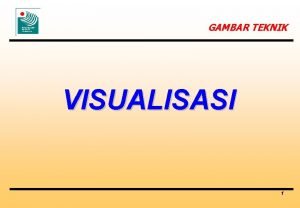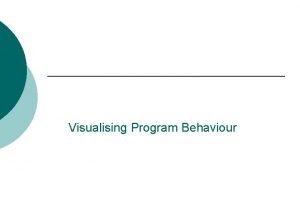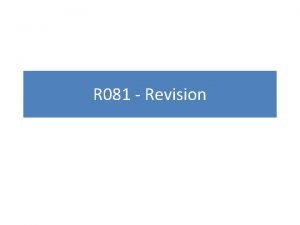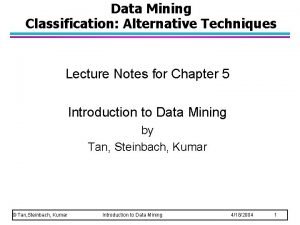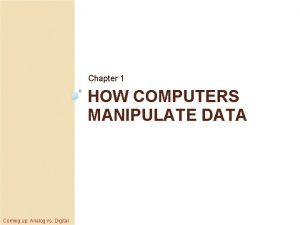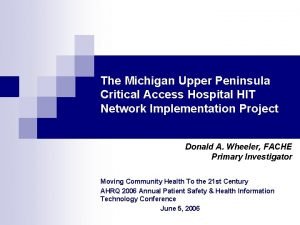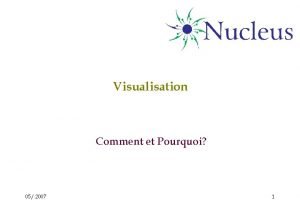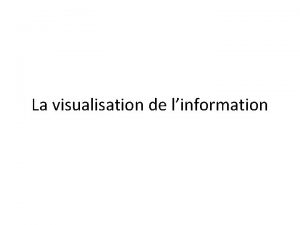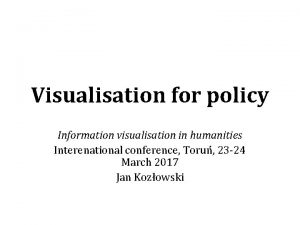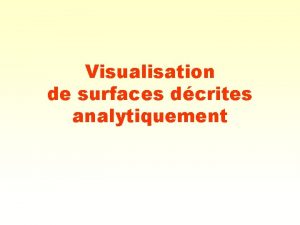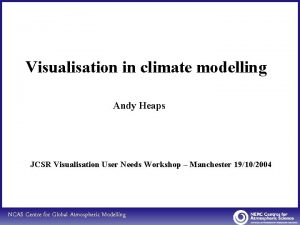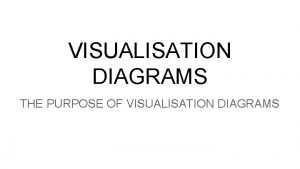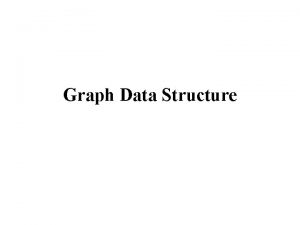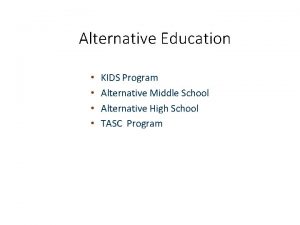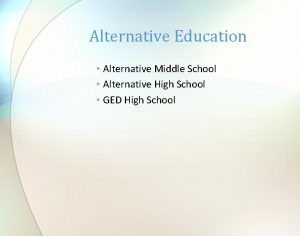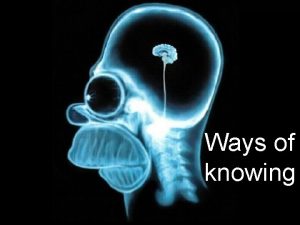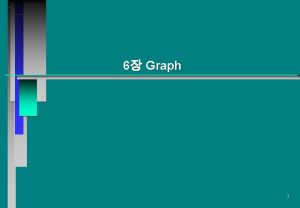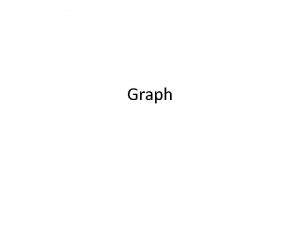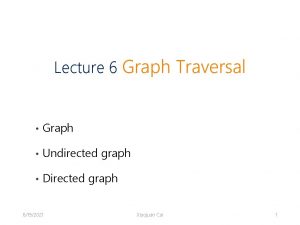Alternative ways to explore Clinical Data graph visualisation


















- Slides: 18

Alternative ways to explore Clinical Data – graph visualisation Ed Cheetham, Principal Terminology Specialist

Introduction • Considerable work is already going on in Use of e. g. : making complex multi-dimensional data Colour Size accessible and understandable – some of this Layout (x, y) Dynamic updating is distinctly ‘visual’ Screenshots from: Enhancing Access to UK Renal Registry Data through Innovative Online Data Visualisations. Afzal Chaudhry, Terry Feest and UK Renal Registry Interactive Geographical Maps

Is SNOMED CT just the ‘data’ in these visualisations? • If we want to see SNOMED CT we look at tables and browser tree controls don’t we? • Not necessarily. . . • Several browsers already have graphical features: • Clini. Clue graphical view Tend to concentrate on individual concepts. • SNOB IHTSDO ‘standard view’ What about sets? • IHTSDO workbench plugins

Sets, e. g. SNOMED CT Subsets NHS Renal subset

Subset subgraph - ZGRViewer Graph. Viz layout Dynamic highlighting Zoomable Class count limits. . . ZGRViewer: http: //zvtm. sourceforge. net/zgrviewer. html (based on dot/Graph. Viz products: http: //www. graphviz. org/) Use does not indicate endorsement, but extremely valuable to illustrate points discussed.

Subset subgraph - Gephi Force-directed layout Dynamic labelling Node size – ‘level’ in graph Glomerulonephritis (disorder) Kidney disease (disorder) Malignant tumour of kidney (disorder) Gephi: http: //gephi. org/ Use does not indicate endorsement, but extremely valuable to illustrate points discussed

Subset compared to SCT corpus

Areas of high and low density: Neoplasm of kidney (disorder) Infectious disorder of kidney(disorder)

Refactoring greedy algorithm. From: Looking for ‘high concept density’: • Rank each member: Actual number [of original set members subsumed] (Potential - actual number) + n • Threshold: Ø‘Density’ must be > 1 for ‘compression’ ØCan set lower threshold for ‘speculative analysis’ • n = ‘magnification factor’

Refactoring greedy algorithm. To: Self+Desc Self Ref’d Support

Remove referenced classes to simplify: Self+Desc Self Ref’d Support

Application to frequency data: Synthetic (but plausible) observation data based on data from Strathclyde Renal Electronic Patient Record and UK Renal Registry data. Thanks to: Colin Geddes, Keith Simpson, Afzal Chaudhry

Application to frequency data: Node size – frequency values Clear cell carcinoma of kidney(disorder) Acute pyelonephritis (disorder)

‘Speculative’ threshold: Self+Desc Self Ref’d Support

‘Speculative’ threshold: Self+Desc Self Ref’d Support

Resize post-simplification Including ‘new nodes’ 320 -> 150 categories Self+Desc Glomerulonephritis (disorder) Desc Pseudohypoaldosteronism Acute (disorder) pyelonephritis (disorder) Self Microangiopathic hemolytic anemia (disorder) Chronic renal impairment (disorder) Ref’d Metabolic renal disease (disorder) Support

49120005 79385002 38481006 15938005 363518003 190681003 3321001 197808006 51292008 237885008 7199000 268232000 236526008 399068003 32659003 431855005 19943007 5619004 85020001 61165007 188250002 86406008 95579008 236416004 71275003 236447005 128473001 236587002 22199006 25341005 2900003 363518003 197590001 36388008 373604002 37085009 90241004 61852001 236380004 62332007 236502006 65520001 239932005 Before and after ‘simplification’ 7725007 320 categories 78129009 st 90% covered by 1 50 categories 186235002 • Chronic renal failure syndrome (disorder) • Acute pyelonephritis (disorder) • Acute renal failure syndrome (disorder) • Proteinuria (finding) • Ig. A nephropathy (disorder) • Chronic kidney disease stage 3 (disorder) • Diabetic renal disease (disorder) 236373001 236399008 236413007 236415000 236429004 236452000 254921004 150 categories 60700002 90% covered by 1 st 22 categories 61758007 • Chronic renal impairment (disorder) [30] 197919005 • Acute pyelonephritis (disorder) • Glomerulonephritis (disorder) [92] 236461000 • Acute renal failure syndrome (disorder) 444794000 • Proteinuria (finding) 428255004 • End stage renal disease (disorder) 24790002 • Diabetic renal disease (disorder)

Conclusions • Established visualisation techniques can be applied to SNOMED CT data [reference and instance] ØExploratory and explanatory stages v. What does the data ‘look like’ v. What does that processing step ‘do’ to the data? • Final views may be more ‘familiar’ (pie charts, summary tables) ØCompetition for available axes! • Need experience re. optimum contribution to the analytic process ØFlexible and configurable tooling ØImaginative participants ØStandards
 A graph that shows alternative ways to use resources
A graph that shows alternative ways to use resources Pre production visualisation diagram
Pre production visualisation diagram Total station visualisation
Total station visualisation Visualisasi isometrik
Visualisasi isometrik Polychromatic lustre cataract
Polychromatic lustre cataract Mona chalabi charts
Mona chalabi charts Qperm
Qperm Visualisation
Visualisation R081 revision
R081 revision Gods ways are not our ways
Gods ways are not our ways Understanding data and ways to systematically collect data
Understanding data and ways to systematically collect data Classification alternative techniques in data mining
Classification alternative techniques in data mining Inputting data in other ways
Inputting data in other ways Computers manipulate data in many ways
Computers manipulate data in many ways Upper peninsula hospitals
Upper peninsula hospitals Clinical data definition
Clinical data definition Clinical data repository
Clinical data repository Sae reconciliation meaning
Sae reconciliation meaning Line graph graph theory
Line graph graph theory
